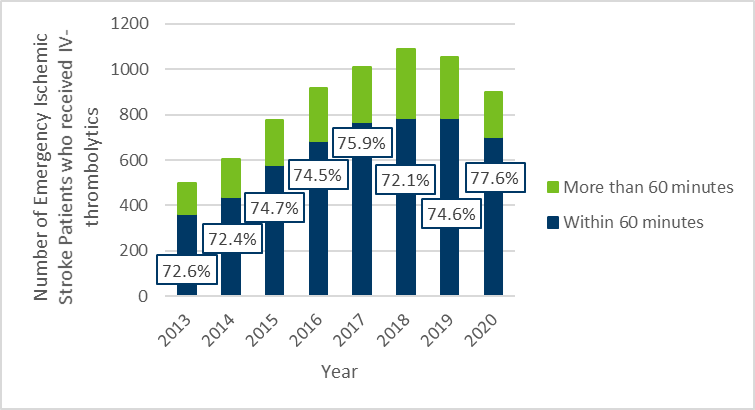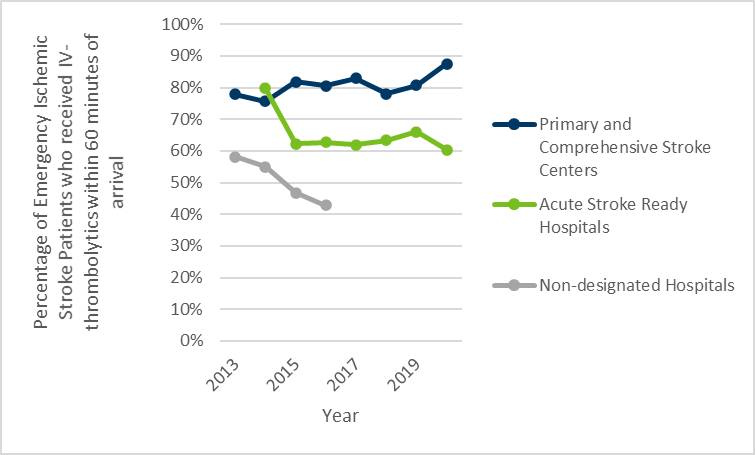Cardiovascular Health
- Cardiovascular Health Home
- CVH Data and Trends
- CVH Programs & Resources
- Minnesota 2035 Plan
- Minnesota Stroke Program
- About Us
Learn More
Related Topics
Contact Info
Cardiovascular Health Program
Cardiovascular Health Indicator
Measure: Door-to-Needle within 60 minutes
| Indicator | Date of Most Recent Measure | Current Measure | Trend |
|---|---|---|---|
| Percent of stroke patients receiving IV-Thrombolytics within 60 minutes of arrival | 2020 | 77.6% | Improving |
Overview
- A stroke is a medical emergency. If diagnosed quickly, there are treatment options to help patients recover. Many patients with ischemic stroke can benefit from clot-busting medicine (thrombolytic drugs) that help to break up the blood clot in the brain. The more quickly the treatment is given through an injection into the vein (also called an IV), the better it can help to reduce the damage caused by a stroke.
- In 2018, almost three-fourths of stroke patients arriving at Minnesota hospitals met the national stroke treatment goal of receiving IV-thrombolytics within 60 minutes of arriving in the emergency department.
- The number of patients meeting this goal has shown slight improvement over the last few years, but there are differences between hospitals designated as Primary or Comprehensive Stoke Centers or Acute Stroke Ready Hospitals by the Minnesota Department of Health and hospitals who have not received designation for their stroke care.
See Also:
Last Updated: 01/19/2023

